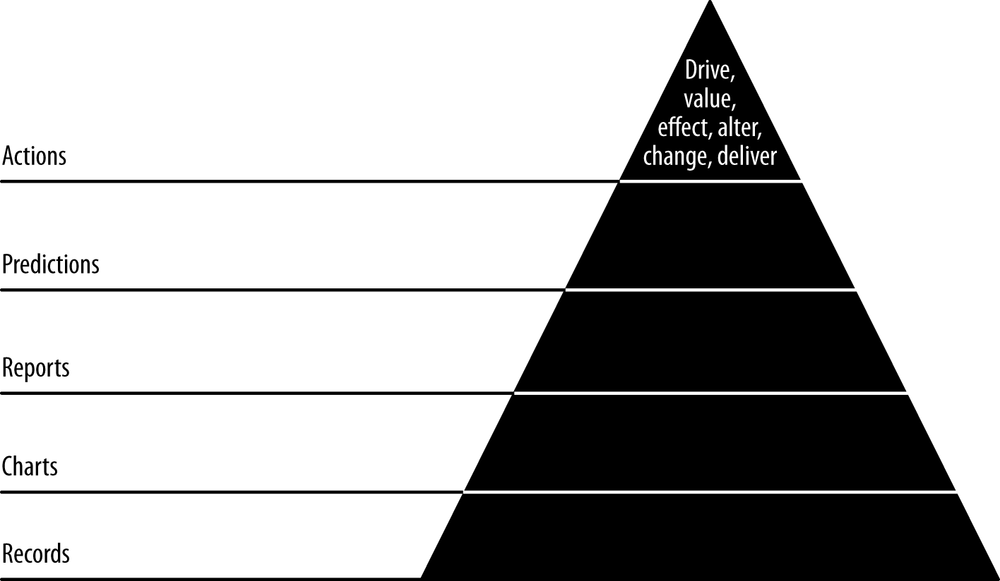Chapter 9. Driving Actions
In this chapter, our fifth and final agile sprint, we will translate predictions into action by diving further into what makes an email likely or not to elicit a response and turning this into an interactive feature (Figure 9-1). We’ll learn to suggest changes to email authors that will make their emails better.

Up to now we’ve created charts associated with entities we’ve extracted from our emails, built entity pages that link together to form reports for interactive exploration of our data, and calculated probabilities that help us reason about the future to tell whether we can likely expect a response to an email.
This poses an opportunity to dig further. We’ve found a lever with which we can drive actions: predicting whether an email will receive a response. If we can increase the odds of a response, we’ve enabled a valuable action.
With driving actions—the improvement of emails—we have arrived at the final stage of the data-value pyramid: enabling new actions.
git clone https://github.com/rjurney/Agile_Data_Code.git
Properties of Successful Emails
We’ve already seen that the time of day has a large effect on email: people send more emails at certain times of day, and we might infer that they also reply more to emails at that time. Email is, after all, a stack, and the most recent emails are those at the top of the stack ...
Get Agile Data Science now with the O’Reilly learning platform.
O’Reilly members experience books, live events, courses curated by job role, and more from O’Reilly and nearly 200 top publishers.

